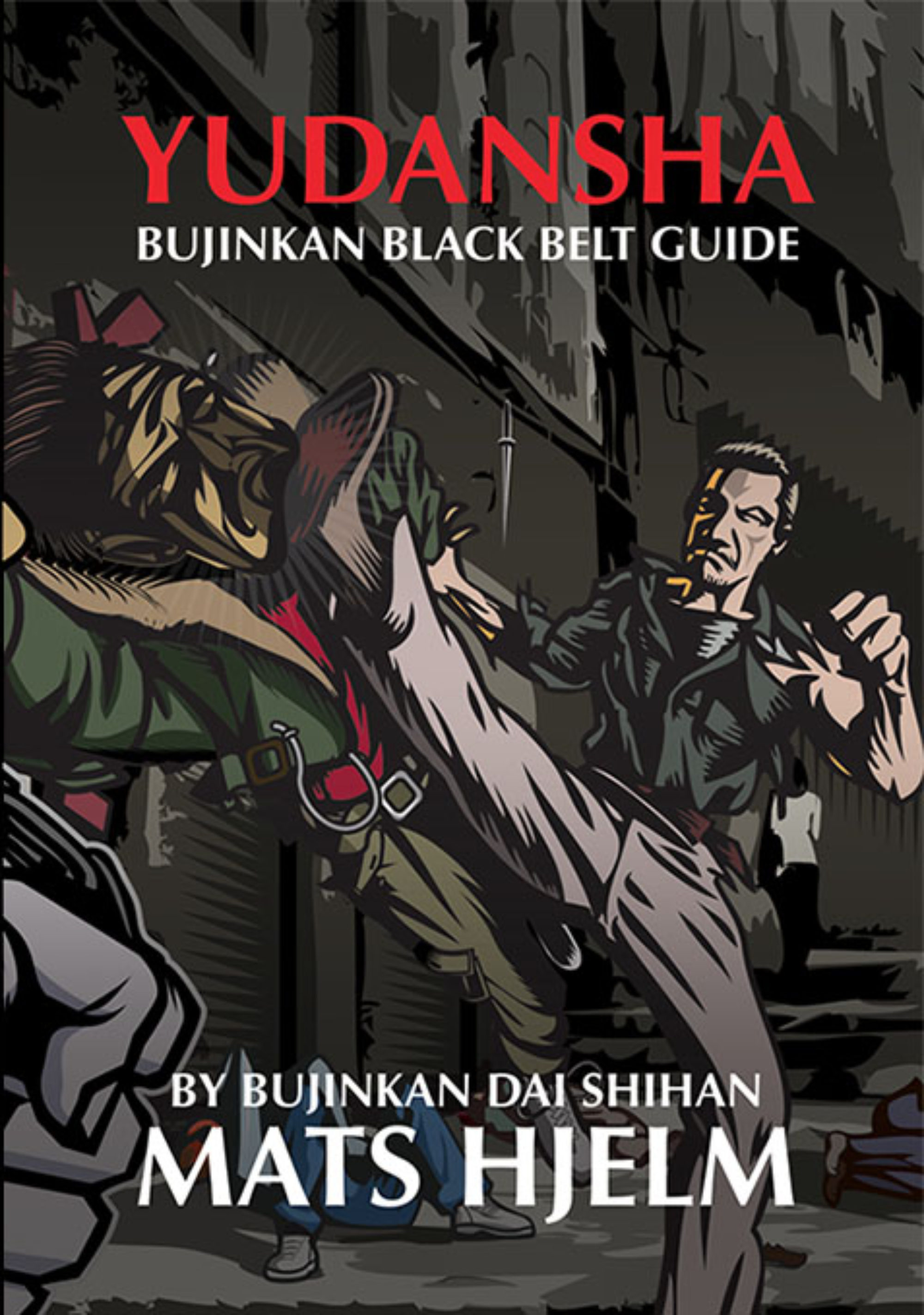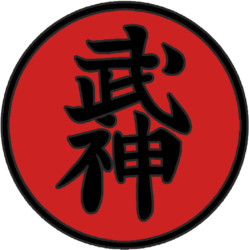Kihon Happo is the very foundation of Bujinkan Dojo Budo Taijutsu. Here is the seventh technique called Musha Dori (Ude Jime Ashi Ori Kata) from page 47 in the YUDANSHA book.
YUDANSHA BOOK by MATS HJELM
 武神館有段者の案内所
武神館有段者の案内所
YUDANSHA – BUJINKAN BLACK BELT GUIDE
Prints in 3-5 business days
Click button below to order
English, Perfect-bound Paperback, 184 pages richly illustrated with pictures and illustrations. (32 483 Words, 145 533 Characters)
This book is a comprehensive guide to understand the Taijutsu of the Bujinkan system as taught by Masaaki Hatsumi Soke. We have this concept of Shu-Ha-Ri which is three major processes to learn Budo. First, we learn the fundamentals, then how to break them up. Then you transcend to a state where you are totally free without even thinking of what you are doing. Needless to say, you can’t get to the last stage without knowing the first stage well. It is said that you should study each level for at least 10 years. This book is all about the first stage we call Shu. It is further divided into three levels.
- 天略の巻 TEN RYAKU NO MAKI (The scroll of Heaven)
- 地略の巻 CHI RYAKU NO MAKI (The scroll of Earth)
- 人略の巻 JIN RYAKU NO MAKI (The scroll of Man)
About the Author: Mats have been training Bujinkan Budo-taijutsu since the early 1980’s. He travelled all around the world to train and teach Bujinkan Budo-taijutsu. http://YudanshaBook.com
Print details: 8.26″ x 11.69″ (EU Standard A4), perfect binding, white interior paper (60# weight), black and white interior ink, white exterior paper (90# weight), full-color exterior ink.
BACKGROUNDThank you for your interest in Bujinkan Budō-taijutsu!
This is not a self-study course, it is really necessary for you to have a qualified instructor to help you. The purpose for this book is to be a tool to help your progress. You will learn names and principles here, and the correct movements from an instructor that can point out bad angles, distance, timing etcetera.
This is a collection of techniques I think black belts in the Bujinkan system should at least be familiar with, and teachers should know by heart.
The layout of the techniques here is from Ten-Chi-Jin Ryaku no Maki, Shidōshi scrolls. Togakure-ryū Ninpō-taijutsu, an out of print book, and numerous publications and videos by Hatsumi Sōke.
This is not an official Bujinkan guide line, book, study material or what you want to call it. It is something I worked on for 35 years and ongoing, it is my legacy to my students. If other teachers want to endorse it or follow it, thank you! If someone doesn’t agree, that’s fine to, by all means release your own better version. This was made to students and friends from many nationalities that bought my videos, attended my seminars and showed interest in my way of teaching over the years.
Mats Hjelm
This book has been an ongoing project by Mats Hjelm at Kaigozan Dojo for 35 years, now it is time to release it publicly in English as version 3.0.
20% DISCOUNT on YUDANSHA & MUDANSHA BOOK
 20% DISCOUNT
20% DISCOUNT 
YUDANSHA & MUDANSHA Book
Black Friday and Christmas discount for the rest of 2018, this is this years Bujinkan Christmas present. Get it at LULU.COM
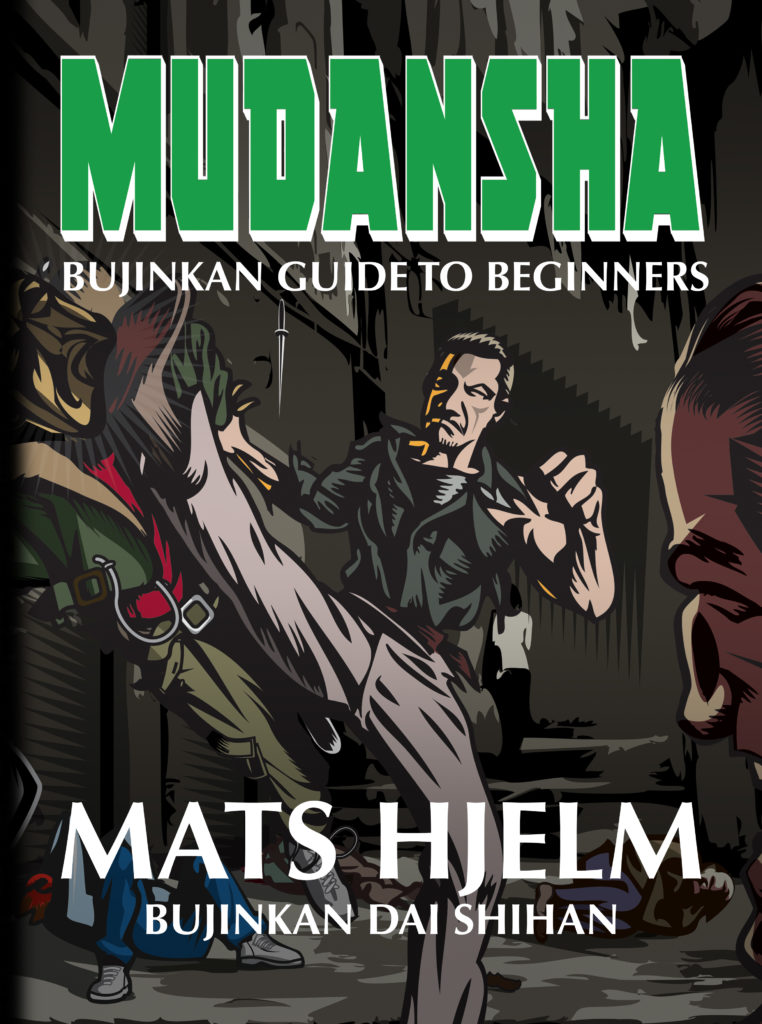
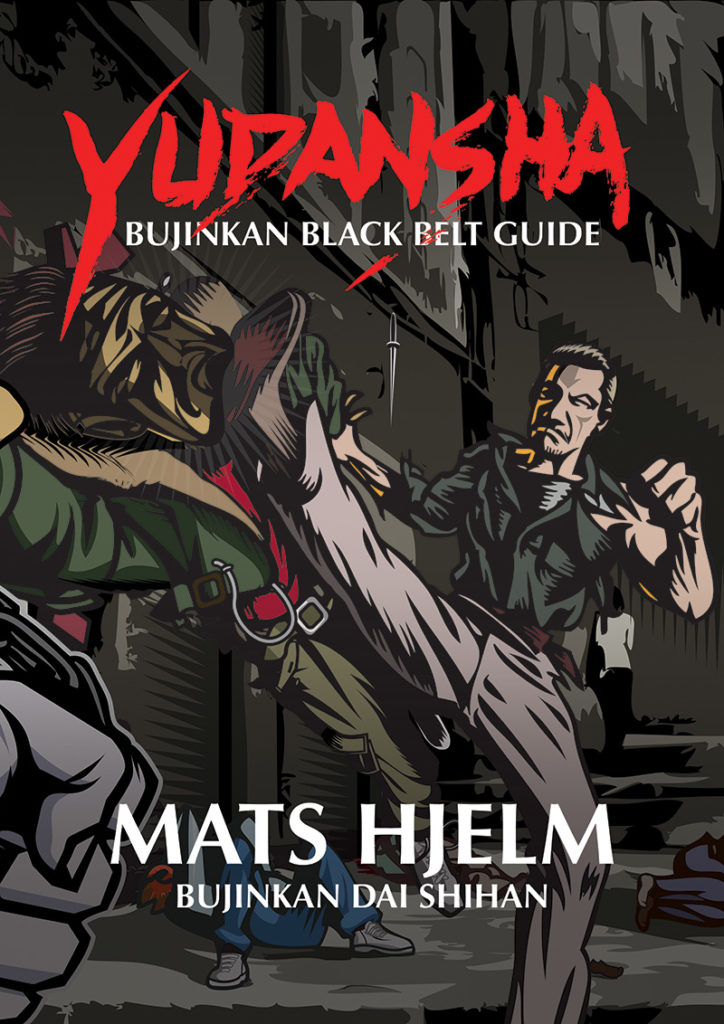
MUDANSHA BOOK by MATS HJELM
 武神館無段者の案内所
武神館無段者の案内所
MUDANSHA – BEGINNERS GUIDE TO BUJINKAN
Prints in 3-5 business days
Click button below to order
English, Perfect-bound Paperback, 96 pages richly illustrated with pictures and illustrations.
This book is a guide for beginners in the Bujinkan Dojo. Everything about the rules and expectations of you as a pratctitioner, etiquette and traditions as well as the most fundamental techniques in our beautiful art.
- 天略の巻 TEN RYAKU NO MAKI (The scroll of Heaven)
Here we learn to move the body naturally and effectively. Essentially how to become a good Uke (receiver of techniques). When Hatsumi Soke’s own teacher Takamatsu Sensei started training over 120 years ago as a young boy he was thrown around the Dojo by the seniors for a year before he was taught any techniques. This gave him a good foundation for the next level.
About the Author: Mats have been training Bujinkan Budo-taijutsu since the early 1980’s. He travelled all around the world to train and teach Bujinkan Budo-taijutsu. http://YudanshaBook.com
Print details: 6″ x 9″, perfect binding, white interior paper (60# weight), black and white interior ink, white exterior paper (90# weight), full-color exterior ink.
YUDANSHA Book RELEASED on Lulu
 武神館有段者の案内所
武神館有段者の案内所
YUDANSHA – BUJINKAN BLACK BELT GUIDE
List Price: $27.77
Introduction Price: $22.22
You Save: $5.55 ( 20% )
Prints in 3-5 business days
English, Perfect-bound Paperback, 184 pages richly illustrated with pictures and illustrations. (32 483 Words, 145 533 Characters)
This book is a comprehensive guide to understand the Taijutsu of the Bujinkan system as taught by Masaaki Hatsumi Soke. We have this concept of Shu-Ha-Ri which is three major processes to learn Budo. First, we learn the fundamentals, then how to break them up. Then you transcend to a state where you are totally free without even thinking of what you are doing. Needless to say, you can’t get to the last stage without knowing the first stage well. It is said that you should study each level for at least 10 years. This book is all about the first stage we call Shu. It is further divided into three levels.
- 天略の巻 TEN RYAKU NO MAKI (The scroll of Heaven)
- 地略の巻 CHI RYAKU NO MAKI (The scroll of Earth)
- 人略の巻 JIN RYAKU NO MAKI (The scroll of Man)
About the Author: Mats have been training Bujinkan Budo-taijutsu since the early 1980’s. He travelled all around the world to train and teach Bujinkan Budo-taijutsu. http://YudanshaBook.com
Print details: 8.26″ x 11.69″ (EU Standard A4), perfect binding, white interior paper (60# weight), black and white interior ink, white exterior paper (90# weight), full-color exterior ink.
Welcome to this page
Hello!
My name is Mats Hjelm and I have been training Bujinkan Budo Taijutsu under Masaaki Hatsumi Sōke for the past 35 years or so. Read more about me here.
All the time since I started training I’ve been keeping notes that progressively became manuals and then books. First they was for myself, then to my students and now I thought it is time to make it public.
So here is the first book coming, it is all about the basics, something I wish I had when I started training. Bujinkan is a huge system with many schools (ryū-ha (traditions)) and it would be impossible to cover everything in a book. Hatsumi Sōke published many books, videos and publications (I collected and have almost all of them). Every time I learned something new I added it to my own notes. The purpose of this book is to be a training guide, reference and help for everyone training in Bujinkan Budo Taijutsu, from beginners up to 5’th Dan.
What is covered in this book is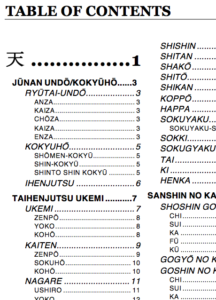
Etiquette and traditions that will help everyone to get comfortable in the Dōjō, from what are we saying in the starting and closing ceremony and what does it mean and why. What is the official uniform, how do I tie the belt so it looks like I’m a pro. How do I bow not looking like Karate Kid. Understanding the Rules of the Bujinkan. How to not look like a fool in front of others in the Dōjō and. And much more.
Techniques
The whole Ten-Chi-Jin Ryaku no maki which is the three levels of techniques most Bujinkan Dōjō use. There have been a few different versions through all the years. I have included all of them and rearranged some, and even added a few more techniques to make it more representative. For example there was only one Muto-dori technique (I added two more), there was only three seated techniques (I added two more). There is a concept of Kihon technique which is the basic way of doing a described technique, sometimes they added 1-5 Ura-Waza to each Kihon technique to add more examples. I added two Ura-waza to each Kihon Happy technique, and a few other techniques to give beter understanding to the techniques. This is not to be confused with Henka which is never written down in the Densho. Henka is more spontaneous techniques you do because you have to, it is like adjusting because what you started doing will not work. There are thousands Henka to each technique and pointless to even try to describe.
When and if the book is released I will add the full content list here.
But first I will show Hatsumi Sōke on my next trip in January 2018 what I’ve done and ask for his permission to release the book. I can understand if he says no, I’ve put 35 years into this book and maybe you don’t deserve to get everything so easy. Maybe it will trap you in my way of thinking and it is better if everyone evolve without too much influence (I don’t know). Anyway it is the correct way I think.
I’ll keep you updated here and on twitter.
Happy Training!
/Mats
